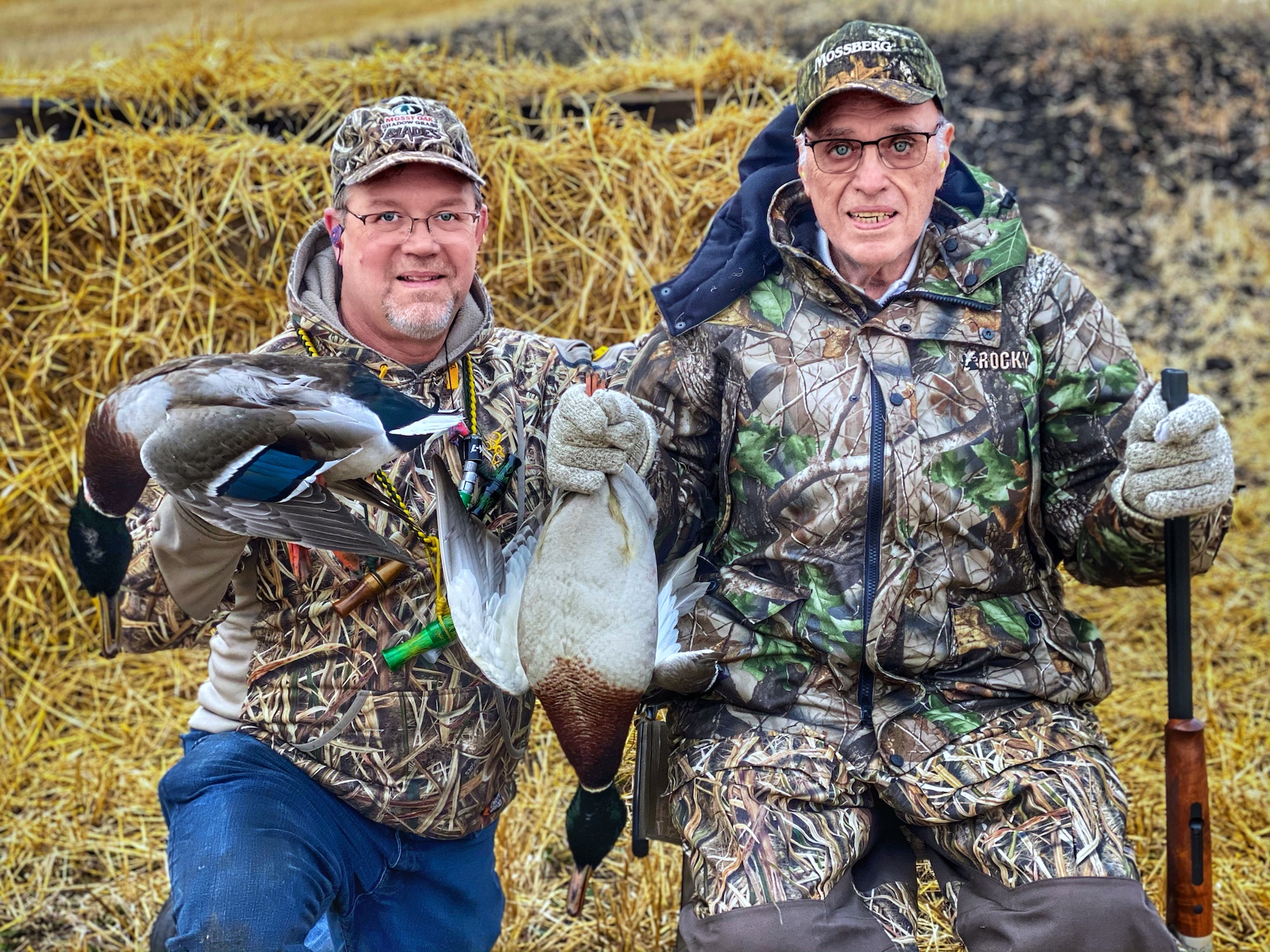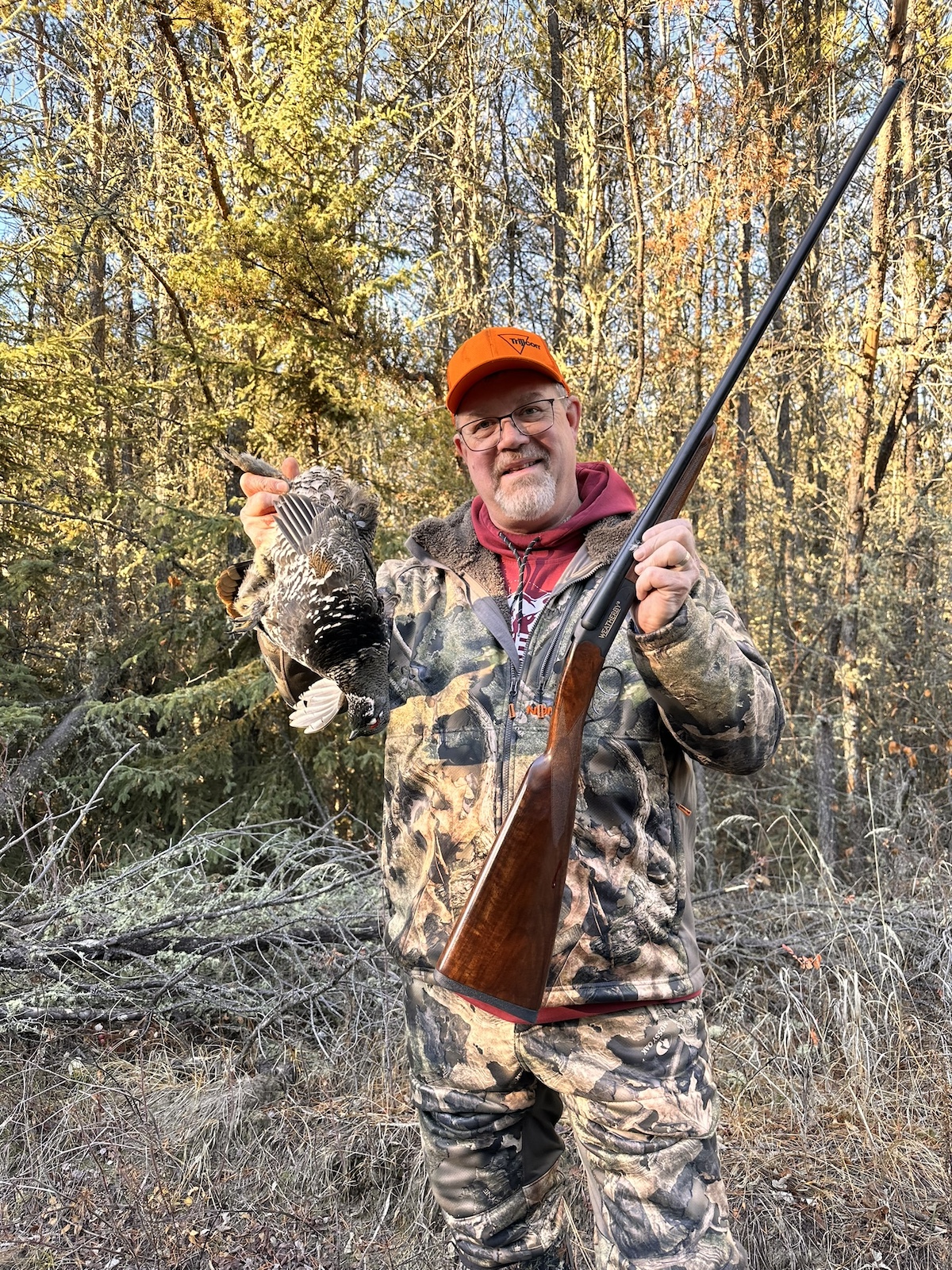Gear
Airgun Black Bears: Hunting Alberta Bruins with the Umarex .50-Caliber Air Rifle
September 29, 2025 •Brad Fenson
June 22, 2025
There’s something timeless about the crisp snap of a 20-gauge shotgun breaking open on a cold morning (or even a warm one for summer shooters). For many hunters, it’s the sound of where it all began. For others, it’s the realization that sometimes, less really is more.
I first felt the magic of a sub-gauge shotgun in my hands as a teenager. The well-worn walnut stock of my dad’s old Stevens side-by-side fit perfectly into my shoulder. That little 20 became my ticket into a lifelong bird hunting addiction. It handled ruffed grouse in tight cover, surprised pheasants in CRP fields and even toppled the occasional honker. More than anything, it gave me confidence.
Like many hunters, I eventually gravitated toward the perceived power of a 12-gauge. But that decision, in hindsight, may have been driven more by convention than necessity. The 12 boomed louder and kicked harder, but it didn’t make the hunt more satisfying. Last fall, that truth hit me with force, especially when considering the gentle recoil.

Hunters are mistaken if they think waterfowling can only be successfully done with heavy-hitting 12-gauge shotguns. Brad Fenson Photo
Southern Saskatchewan is a haven for waterfowlers, and I had the good fortune to hunt there with Prairie Goose Outfitters. We watched nearly 10,000 sandhill cranes wheel through a blazing sunrise, their prehistoric calls echoing over frost-covered fields. My brother Dave and I limited out on those magnificent birds before the sun cleared the horizon. It was magic.
But what lit the spark again was what happened the next day. Our outfitters, Mark DesRoches and Bill Dougan, went out on their own and shot a limit of cranes, this time, with 20-gauge shotguns. That was the moment my mind lit up with possibilities.
Mark, a lifelong hunter and co-owner of Prairie Goose Outfitters, is a true believer in sub-gauges. He speaks passionately about his Beretta A400, a shotgun built as a true 20 from the frame up, not just a scaled-down 12. For him, switching to a 20-gauge was a personal challenge that evolved into a lifestyle. Lighter, quicker to shoulder and easier to carry—especially on long slogs through marsh or upland cover—it simply made sense.
“The birds aren’t the challenge,” Mark said of shooting cranes and sea ducks. “Getting out there and hunting with intention—that’s where the reward is.”
He’s already completed the North American Waterfowl Slam with a 12-gauge, but now he’s halfway through doing it again with a 20. That’s 41 species of ducks, geese, swans and cranes, including brant, harlequins and king eiders, all taken with the smaller bore. His son Drake is now chasing the same list with a 12, while Mark pursues it again beside him, 20 in hand.

Modern ammunition have made subgauges more than capable for hunting tasks once thought of as the domain for heavier gauges. Brad Fenson Photo
Many dismiss the 20-gauge as a beginner’s gun or only suitable for upland birds. The numbers say otherwise. A 3-inch 20-gauge load of #2 shot carries 87 pellets compared to 97 in a 12. A modest 10-shot difference is negligible at ethical shooting ranges, especially with modern ammo like Fiocchi’s Flyway steel, which delivers tight patterns and devastating downrange energy.
Mark, who’s logged thousands of rounds through his sub-gauge guns, notes that 20s often pattern better than 12s, being more square, less scattered and with less muzzle jump. That means faster second shots, less fatigue, and more birds in the bag.
The Stevens 555 is an excellent example of an over/under built for performance. It’s light, stylish and nimble, with carbon steel barrels, a Turkish walnut stock and five choke tubes to adapt to any bird. Built on an actual 20-gauge frame, it’s more than just an entry-level gun. It’s a serious tool for serious bird hunters.
And when you send hundreds of shells downrange, as you might in a place like Argentina, you’ll be thankful for that lighter load. A heavier 12-gauge wears you down, but a 20 lets you keep swinging. It was hard not to become a believer after shooting close to 2,900 doves in two days with an A400 semi-automatic Berretta 20-gauge. If there was ever a time to be thankful for less recoil, it is when you fire thousands of shotshells in hours.
Sub-gauges like the 20 provide a unique mix of nostalgia, skill, and modern ballistic performance. For younger hunters or those of smaller stature, they offer a more accessible and comfortable shooting experience. For seasoned hunters, they provide a new challenge, a way to refine shooting mechanics and engage more intentionally with the hunt.
More and more private waterfowl clubs are recognizing this. In California, some clubs allow only 20-gauge shotguns to discourage long-range sky-busting and promote ethical shooting.

The smaller, lighter 20-gauge or even .410 is a pleasure to tote on upland hunts and more than up to the task. Brad Fenson Photo
When my twin girls were born, they received Mossberg 510 Mini Super Bantam—All-Purpose pump .410 shotguns in Muddy Girl camo. These shotguns are perfect for beginners who want to start at an early age. The girls know the shotguns are theirs and ask about them regularly. A sub-gauge shotgun is the perfect gift for any family member who will appreciate it, even from day one.
Maybe your first shotgun was a 20. Perhaps you’ve never shot one at all. But if you want to reignite bird hunting excitement, consider going small. I have converted several friends who have now invested in new shotguns.
The elk hunting was slow, and Tom asked if he could use the 20-gauge over-and-under after watching me shoot several ruffies. He had not hunted grouse in years and was giddy with excitement. We got to the maze of trails we had been hunting and immediately found a bird. Tom wasted no time dropping shotshells into the sub-gauge shotgun and harvesting his first ruffed grouse of the trip. The huge smile on his face told the story, and it wasn’t five minutes later that he pulled the trigger on his second bird. Our timing was impeccable, and Tom had a limit of five birds in less than 45 minutes. As we returned to camp, I participated in the action and harvested a few more birds with my .410. Grouse fever gripped everyone who got a taste of the action.
Another morning of elk hunting ended, and we regrouped to hunt birds again during the afternoon. Tom was pacing by the vehicle, anticipating leaving camp and sharpening his eyes for grouse. There can be lean years for grouse hunting, but the high-cycle years generate memories that leave us dreaming of the glory years. Tom missed a bird that broke fast and headed for cover. The swing and a miss only made him more determined to shoot straight. We spotted another bird about 100 yards ahead. As we closed the distance, the bird flushed. Tom shouldered and swung the shotgun, unleashing a deadly pattern that sent the bird cartwheeling through the air. The focus and determination generated big smiles, and I could sense a sub-gauge addiction building. The wild flushes and sub-gauge success were sweet rewards that made the hunting more enjoyable.
We did end up with some elk on the meat pole during the week, but the grouse hunting made every day a rewarding adventure. Grouse occupied my mind back home, and when Weatherby introduced the new Orion side-by-side .410 with external chokes, I couldn’t resist. Next year’s grouse arsenal will include the new double, but I doubt I will offer it up as an option for others. The straight English hardwood stock looks and feels like the ultimate forest grouse shotgun. It has had some break-in time this fall and is a regular companion on big game hunts where grouse can be found. It shoulders smoothly and patterns great.
The next time you shoulder a sub-gauge in the early light, watching birds wing into view, you might find what so many of us have rediscovered: a deeper connection to the hunt, to the birds, and the craft.
In the end, it’s not about how much guns you carry, it’s about the shotgun you carry.

A Beretta A400 20-gauge made for a great waterfowl hunt in British Columbia. Brad Fenson Photo
Lightweight Handling: Carry it all day without fatigue—especially valuable in upland terrain or marsh edges.
Lower Recoil: More comfortable shooting, especially for younger or smaller-framed hunters, or long days afield.
Better Swing Speed: Smaller, trimmer frames make getting on fast-moving birds like teal, grouse, or doves easier.
Improved Focus: The smaller shot load encourages better shot placement and more disciplined shooting.
Modern Ammo Performance: Advancements in steel and tungsten loads mean the 20 is no longer just a close-range option.
A soft-shooting semi-auto built on an actual 20-gauge frame. Fast cycling, stylish, and built to last; $2,100.
Affordable, lightweight, and incredibly versatile. Chrome-lined barrels and Turkish walnut stock; $709.
Reliable inertia-driven semi-auto. Light, nimble, and a favorite among serious waterfowlers; $1,400.
Browning Citori Hunter Grade I
Classic over/under with elegant lines and proven performance. Great for upland and clays; $1,800.
Budget-friendly semi-auto with surprising features and reliability. Great starter gun; $700.
Winchester SX4 Field Compact 20 Gauge
Gas-operated and ergonomic, with reduced length of pull, perfect for smaller shooters; $1,000.
Straight English hardwood stock, interchangeable chokes, with style and lightweight features; $ $1,099.
